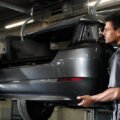Ultimate Guide to Inspecting and Testing Used Cars: Essential Tips You Need to Know

Buying a used car can be a daunting task, especially when you are unsure of its condition. Whether you’re a first-time buyer or a seasoned car enthusiast, it’s essential to know the key factors to consider before making a purchase. In this comprehensive guide, we will walk you through the vital tips and techniques to inspect and test used cars thoroughly.
From assessing the exterior and interior to understanding the mechanics and conducting test drives, we’ve got you covered. So, buckle up and get ready to equip yourself with the knowledge you need to make a smart and informed decision when it comes to buying a pre-owned vehicle.
Exterior Inspection: What to Look for
When inspecting the exterior of a used car, it is crucial to be thorough and attentive to any potential issues.
Checking for Signs of Previous Accidents or Bodywork
During the exterior inspection of a used car, there are several key points to keep in mind. One important tip is to look for any paint overspray on non-painted surfaces, such as rubber seals, window edges, and plastic trims. This could indicate that the car has been repainted after an accident, which may be a cause for concern.
Another crucial aspect to check is if the doors, hood, and trunk align properly. Misaligned panels can suggest that they have been replaced or repaired, potentially hiding underlying issues. It is also helpful to feel along the body panels to detect any irregularities in texture. This could indicate the use of bondo filler to repair damage, which should be taken into consideration.
Inspecting seams and welds for any signs of welding marks is essential. These marks could imply major repairs and raise questions about the car’s history. By paying attention to these details, you can gain valuable insight into the condition of the exterior of a used car.
Examining The Condition of The Paint and Any Signs of Rust or Corrosion
When inspecting the exterior of used cars, it is important to go beyond just checking for previous accidents or bodywork. One key aspect to consider is the condition of the paint job. Look closely for any faded or discoloured areas on the paint surface, as this could indicate sun damage or poor maintenance.
Additionally, be on the lookout for any bubbling or blistering on the paint surface, as this can be a sign of rust underneath. Rust is a serious issue and can spread quickly, so it’s crucial to inspect areas prone to rust, such as wheel arches, undercarriage, and door bottoms. Any visible rust should be taken seriously. Another detail to pay attention to is the panel gaps and fitment around doors, fenders, and the hood.
Large gaps can suggest poor repairs, so it’s essential to be thorough in your inspection. By being attentive to these details, you can ensure that you have a comprehensive understanding of the exterior condition of the used car you are considering.
Click Here: Best Used Car for Sale
Inspecting Tires, Wheels, And Suspension Components
When inspecting a used car, it is vital to thoroughly examine the tires and suspension components. Checking the tire tread depth is essential to ensure that they meet legal requirements. A tread depth gauge can help determine if the tires are worn beyond their limit.
Additionally, paying attention to uneven wear patterns can provide insight into potential alignment or suspension issues. Along with the tread, it is crucial to inspect the sidewalls of the tires for any cracking, bulges, or signs of damage. These can indicate tire age or poor maintenance. Furthermore, inspecting the wheels themselves is essential.
Look for any bends, cracks, or signs of repair, as damaged wheels can affect vehicle performance and safety. Lastly, don’t forget to observe the suspension components. Look for leaks, worn bushings, or excessive play, as these could be red flags. Addressing any abnormalities before finalising the purchase is crucial.
By thoroughly inspecting the tires and suspension, you can ensure the overall safety and performance of the used car.

Interior Inspection: Assessing the Condition and Functionality
Before purchasing a used car, it is essential to thoroughly inspect the interior to assess its condition and functionality. Start by checking for any signs of damage or wear on the seats, upholstery, and carpeting. Look out for tears, stains, or excessive fading, as these can indicate poor maintenance or heavy use.
Test all buttons, switches, and knobs to ensure they are working properly. This includes functions like adjusting the seats, windows, mirrors, and lights. Furthermore, it is crucial to evaluate the functionality of features such as the air conditioning, heating, audio system, and navigation system.
Make sure they are all in good working order and produce the expected results. Taking the time to inspect the interior thoroughly will give you a better understanding of the overall condition and functionality of the used car.
Engine and Mechanical Inspection: Evaluating the Heart of the Car
When it comes to inspecting and testing used cars, one of the most crucial areas to focus on is the engine. Take the time to thoroughly inspect the engine to ensure there are no leaks or unusual noises.
Look for any signs of oil or coolant leaks, as these can indicate potential issues. Additionally, check the condition of belts and hoses to ensure they are in good shape and not showing signs of wear or damage. It is also important to assess the fluid levels and condition, including the oil, coolant, brake fluid, and transmission fluid.
By paying attention to these details, you can get a better understanding of the overall mechanical health of the car and ensure that it is reliable and safe to drive. Lastly, don’t forget to assess the performance of the brakes, suspension, and steering for any signs of wear or malfunction.
Test Drive: Putting the Car to the Test
During the test drive, it is crucial to be attentive and observant to ensure a thorough inspection of a used car. Firstly, pay close attention to any unusual noises or vibrations that could potentially signify problems with the car’s engine or suspension.
Any strange sounds or vibrations should be noted as they may require further inspection. Also, evaluate how smoothly the car accelerates and brakes. Any jerking or hesitation during acceleration or braking can be a red flag and may indicate underlying issues that need to be addressed. Additionally, it is essential to test the functionality of the air conditioning and heating systems.
Ensure that they provide adequate cooling and heating as needed. Lastly, assess the car’s handling and responsiveness by manoeuvring through different types of roads and traffic conditions. Look out for any difficulty in steering or unresponsiveness, as these are important factors to consider when evaluating the overall condition of the used car.
By carefully evaluating these aspects during the test drive, you can make a well-informed decision before purchasing a used car.
Conclusion
The process of inspecting and testing used cars is crucial for making an informed purchase. By following the guidelines provided in this guide, potential buyers can navigate the complexities of assessing a pre-owned vehicle’s condition with confidence.
From examining the exterior for signs of wear to conducting thorough interior checks and test driving, these essential tips empower buyers to make well-informed decisions. Remember, a meticulous inspection ensures not only the reliability of the car but also the safety of the driver and passengers.
Embracing these tips will aid in securing a reliable, quality used vehicle that aligns with both your needs and budget.






